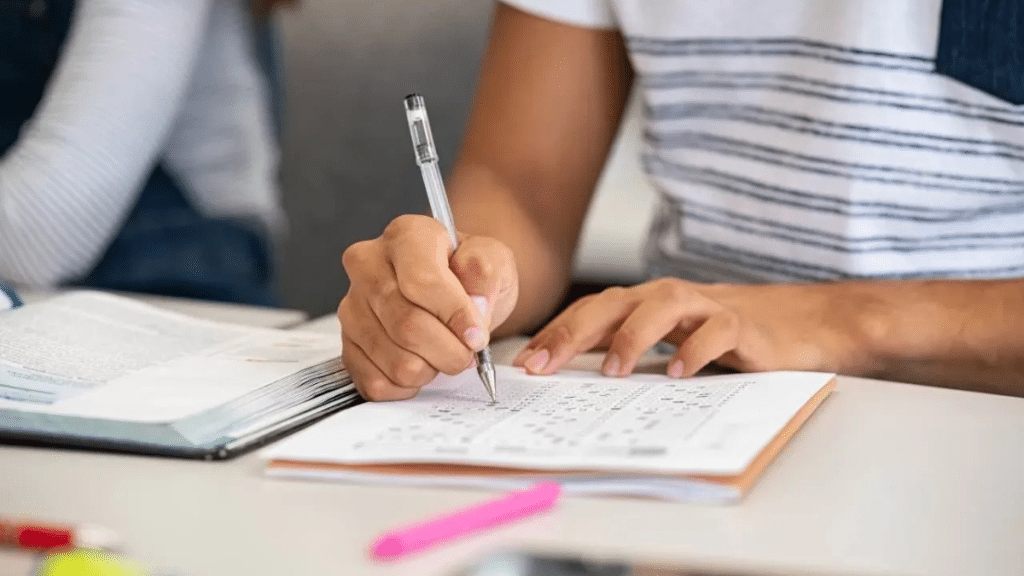Getting ready for the SAT can feel like a significant milestone. Whether you are aiming for a top college or just want to keep your options open, this test carries weight. But even the smartest students can get tripped up by common mistakes in how they prepare.
The good news is that most of these mistakes are avoidable. You do not need to study for hours every day or sign up for an expensive course. You just need to know what works and what does not. Let’s break down the top five mistakes students make when preparing for the SAT and how you can stay one step ahead.
Mistake One: Studying Without a Real Strategy
Jumping into SAT prep without a plan is like trying to cook without a recipe. You might end up with something decent, but more often than not, you waste time and effort without getting the results you want.
Some students grab a practice book and flip to random sections. Others take a few practice tests without reviewing what they got wrong. That approach might feel productive, but it usually leads to slow progress and growing frustration.
Instead, start with a diagnostic test to find your current level. Then build a schedule based on your strengths and weaknesses. Focus on the topics that will give you the biggest return. Set specific goals and track your progress each week. When your prep has direction, every study session counts.
Mistake Two: Treating the SAT Like Every Other Test
It is easy to assume the SAT is just another school exam. After all, you have taken plenty of tests before. How different could this one be? But the SAT has its own rhythm and style, and it often catches students off guard when they treat it like just another multiple-choice worksheet.
The confusion gets even deeper when past test experience starts to blur together. Some students use the PSAT as their main reference point. Others assume the SAT and ACT are more or less interchangeable. That kind of thinking can quietly steer your prep in the wrong direction.
If you are unsure how these tests differ, it is worth taking a few minutes to explore the differences between the PSAT and the SAT. You do not need to memorize every detail; just having a clear understanding of what sets them apart can help you study with more purpose and avoid surprises later on.
The better you understand the test you are walking into, the better you can prepare for it. It is a small step, but one that makes a big difference in how confident you feel when it counts.
Mistake Three: Avoiding Weak Spots
It is normal to want to practice the parts of the test you are already good at. It feels nice to see high scores in areas where you are confident. But if you spend all your time reviewing what is easy, your actual score is not going to move much.
The fastest way to improve is by going straight to the sections that challenge you. It may be the grammar rules you always forget. It may be word problems that slow you down. Whatever it is, do not avoid it.
Start by reviewing your mistakes after every practice session. Ask yourself why you missed a question. Was it a simple error or a more profound misunderstanding? Focus your next few sessions on that topic until it becomes a strength. This is how real progress happens.
Mistake Four: Relying on Last Minute Cramming
Cramming might have worked for a history quiz or vocab test, but it is not going to cut it with the SAT. This is not about memorizing facts. It is about solving problems under pressure and thinking critically across a range of topics.
Your brain needs time to absorb and process the material. You cannot rush that. Instead of cramming, aim for consistency. Even fifteen to twenty minutes a day can be enough if you stick with it over time.
Use a calendar or app to set reminders. Mix in short review sessions with longer practice blocks. Break topics into smaller parts so you do not feel overwhelmed. The key is to build a routine that fits your life and keeps you moving forward without burning out.
Mistake Five: Skipping Full Practice Tests
Doing a few questions here and there might help you understand the content, but it does not prepare you for the test-day experience. The SAT is long. It requires stamina, focus, and smart pacing. If you do not train for that, you are more likely to hit a wall halfway through the exam.
Schedule time for at least two or three full-length practice tests before the real thing. Sit in a quiet space. Use official materials. Time each section exactly as it will be on test day. Take the breaks as scheduled.
This kind of practice helps you build endurance and recognize your natural energy patterns. You will start to see when your focus drops and where your pacing needs to improve. By the time the actual test comes around, the format will feel familiar instead of intimidating.
Final Thoughts
The SAT can feel overwhelming at first, but it becomes much more manageable when you avoid the mistakes that hold most students back.
To recap:
- Study with a strategy that fits your goals.
- Understand what makes the SAT unique.
- Focus on your weak spots instead of ignoring them.
- Build good habits instead of depending on cramming.
- Practice in real test conditions to build confidence.
You do not have to be perfect to succeed. You just need to be consistent and intentional with how you prepare. The more you learn from your progress, the more control you gain over your performance.
And remember, this test is just one part of your academic journey. You are building skills that will serve you far beyond the SAT itself.
